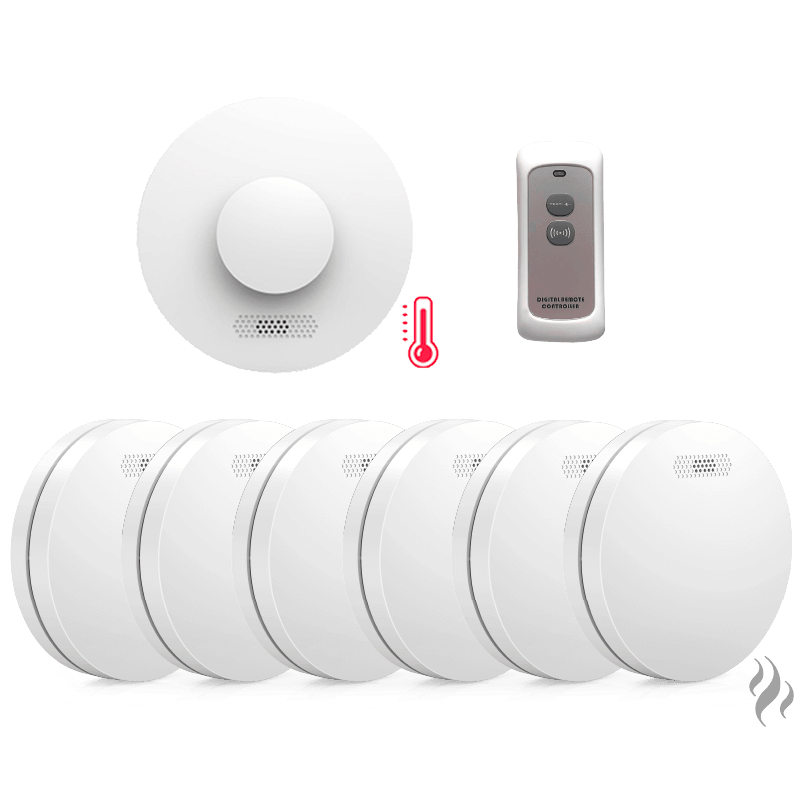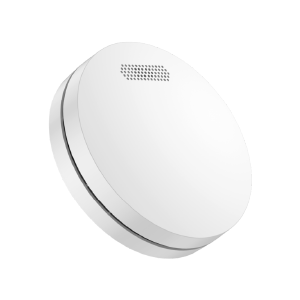The number one priority for landlords and homeowner should be to ensure that they have an adequate fire detection system in place. The most common form of these systems is smoke and heat alarms, but what are the differences between them? Is there a definitive difference or can you get away with using just one type of detector without having the other present in your home? In this blog post, we will discuss some of the differences between these types of alarm systems so you can understand how to make your home safe.
Why do I need both types of alarms in my home?
You may be wondering why you need both a smoke detector and heat alarm in your home. The answer is because these two types of alarms provide different protections to the homeowner or landlord who has them installed. There are two main types of fire alarms, heat and smoke. The difference between the two is that smoke detectors are triggered when smoke is sensed, while heat sensors go off when they detect high temperatures.
What are smoke alarms?
Smoke alarms are a necessity in every household. They can detect the presence of smoke and alert you with an audible signal, making them an invaluable resource for detecting home hazards and provide protection to your family.
Ionization vs photoelectric detectors: what type of smoke alarms is better?
Smoke alarms rely on a detection sensor to identify the presence of smoke particles. They come in two types, ionization or photoelectric detectors. Ionization alarms have a sensor that detects the presence of smoke particles in the air and is triggered by their electrical charge. Photoelectric alarms detect visible light, as well as ultraviolet wavelengths created when heated materials emit invisible infrared energy.
It’s safe to say every home should have a photoelectric smoke detector. While the ionization smoke detector has been proven more effective in detecting flaming fires, photoelectric alarms outperform it when it is a smoldering fire.
Where to locate smoke alarms?
Smoke alarms should be placed on every level of your home, including basement and attic, to guarantee minimum safety protection. For maximum protection, it is recommended to fit smoke alarms in all areas, including halls, landings and bedrooms.
Since smoke detectors are sensitive to even just a small amount of smoke, it’s better to avoid placing one in locations that are prone to fumes or where food is prepared. For example, bathrooms, kitchens and garages could trigger false alarms due to expected smoke particles to be released in the area. For this reason, heat alarms are recommended over smoke alarms in these areas.
It is also important to keep in mind that regulations for fire alarms vary from country to country, and that regulations often change. For instance, Scotland has recently enforced new laws which require all home owners to comply with. Read more info here.
What is a heat alarm?
As the name suggests, heat alarms are designed to detect sudden changes in temperature, rather than smoke and fumes. Heat alarms also operate in a different way if compared to smoke alarms. When a certain temperature is reached for an extended period of time, the heat alarm will be activated.
Which heat alarm is better?
There are two different ways the heat alarm detects excessive heat: rate-of-raise and fixed temperature. Rate-of-raise heat alarms, as the name suggests, will sound when the ambient temperature rises at a certain rate over a set period of time. Fixed-temperature heat alarms, on the other hand, will sound when a certain temperature is reached for an extended period of time.
While the fixed-temperature heat alarms are less common, rate-of-raise temperature are way more effective and allow the alarm to react quickly when there is a rapid change in temperature, avoiding false triggers.
Where to locate heat alarms?
Heat alarms are best oriented in areas where there is an increased risk of fire or heat damage. Some examples include kitchen, indoors garage and laundry room. These areas require heat alarms over smoke alarms as the fumes produced by the appliances in place would trigger false alarms.
For example, a gas stove in the kitchen would trigger a heat alarm faster than it would smoke alarms. In addition, some types of cooking generate more grease and steam that may cause smoke detector to trigger for false alarms as soon as you start cooking.
On the other hand, heat alarms should not be fitted in areas such as hallways and bedrooms, as they do not detect smoke and fumes.
Multi-sensor fire alarms: what's to know about them
Multi-sensor fire alarms contain two separate sensing elements: photoelectric and thermistor, which detect excess of both smoke and heat at the same time.
This allows a multi-sensor fire alarm to be more efficient at detecting signs of fire of any kind, from high flames to slow-burning fumes. While this technology could be considered as more efficient than traditional single sensor alarms, it is to be considered that multi-sensor alarms are more prone to false alarms in different house locations.
If both sensors are active at the same time, there would be no point in installing this detector in the kitchen, since its primary function would be voided. A traditional single sensor alarm is more suited for this location because it will react to temperature raise only, rather than on cooking fumes.
What's the best solution?
For this reason, FireGuard+ Smoke and Heat alarms are equipped with both smoke and heat detection sensor, but operate with one sensor at a time. When set to smoke detection will only detect smoke particles; when switched to heat detection will only react to changes in temperature. This is the best solution for house owners that want to protect home areas and avoid false alarm triggers.
When should I replace my fire alarms with new ones
Replacing fire alarms is expensive, but it is essential to prevent a serious fire from happening in your home.
It's recommended that you maintain and replace the alarms every ten years or when they have reached their maximum life expectancy, whichever comes first. It is also important to note what kind of alarm system you are using in your home since some require more frequent replacement than others.
For example, hard-wired smoke and heat alarms will require continuous maintenance and could cost up to £470 per yearly inspection. There are also some alarm systems that don't have a definite lifespan and may need to be replaced more often, such as those with replaceable batteries that will only last up to one year.
It is recommended to adopt 10 years life-span Smoke and Heat alarms, which are the latest models, to give a peace of mind when going about your business in and around the home.
Conclusion
In summary, both types of alarms have their own unique purpose and are equally important for safety throughout your home. It's important to note that heat detectors do not detect the presence of smoke, which is usually one of the first signs of a fire. So to safeguard your building against all fire hazards, it’s a good idea to use a smoke alarm alongside heat alarms.
FireGuard+ Smoke and Heat alarms can be connected in a circuit up to 20 units, covering the whole perimeter of your home. This means that if one the alarms activates, the whole system will sound, providing you essential seconds to escape to safety. For more information, take a look at the FireGuard+ range of interconnectable detectors.









